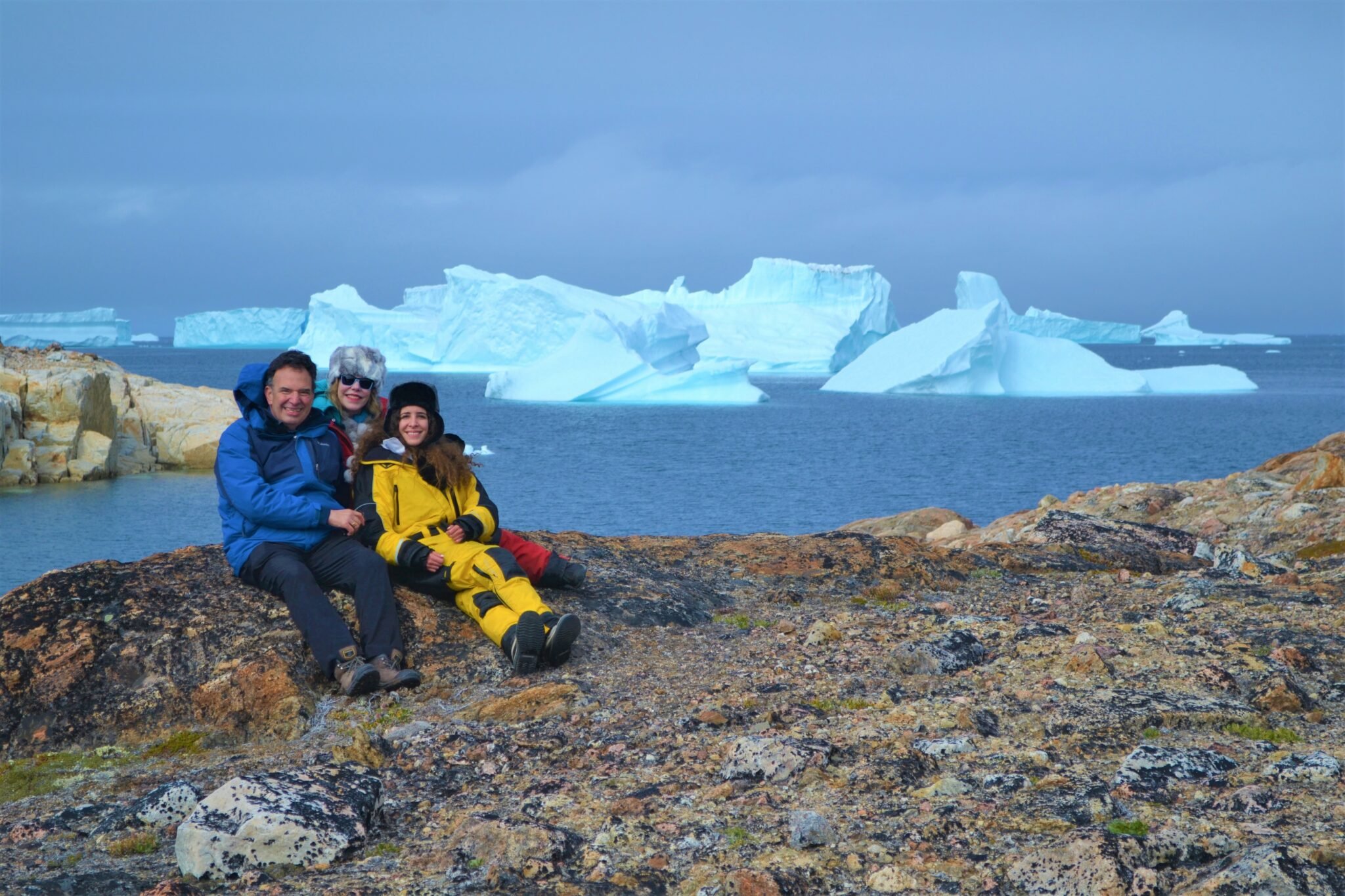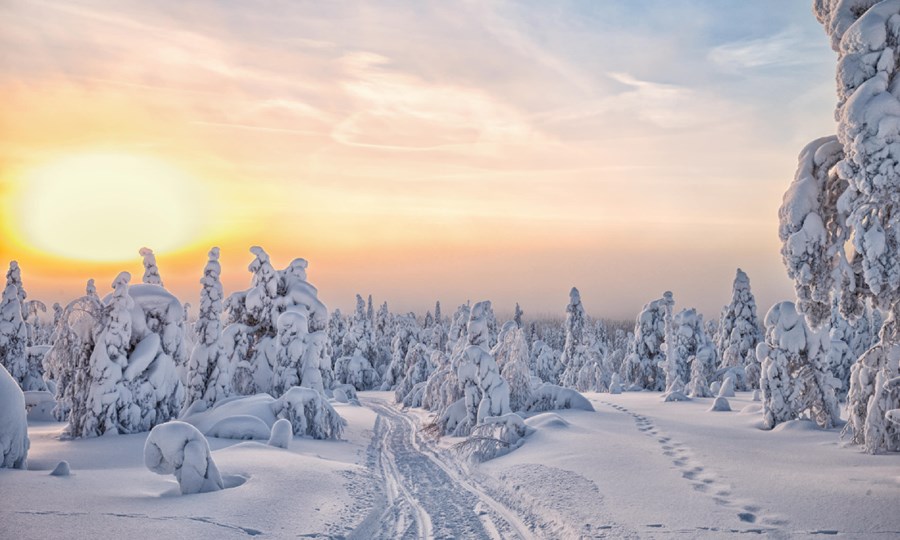At Arctic Kingdom we take great pride in our team, knowing that our Expedition Leaders have one wild job. Two of our top Expedition Leaders, Dave Briggs and Françoise Gervais, have years of experience in leading Arctic excursions and have developed an incredible base of knowledge around safety, the environment and the wildlife that makes the Arctic so unique. They are also able to capture of the spectacular world of the North through their photography.
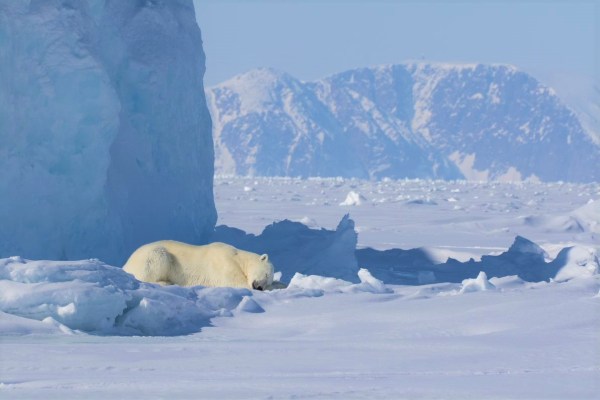
We’re most inspired by their ability to express the awe-inspiring expanse of the Arctic landscape and rare animals being captured in their natural habitats. They developed these skills by returning year after year to the Arctic. When you spend as much time in the Arctic as these two it is no wonder that they have such a keen eye for capturing what makes the Arctic incredible.
I was able to talk with Dave and Françoise, and ask them about their experience capturing the essence of the Arctic and their passion for photography.
What is your draw to the Arctic?
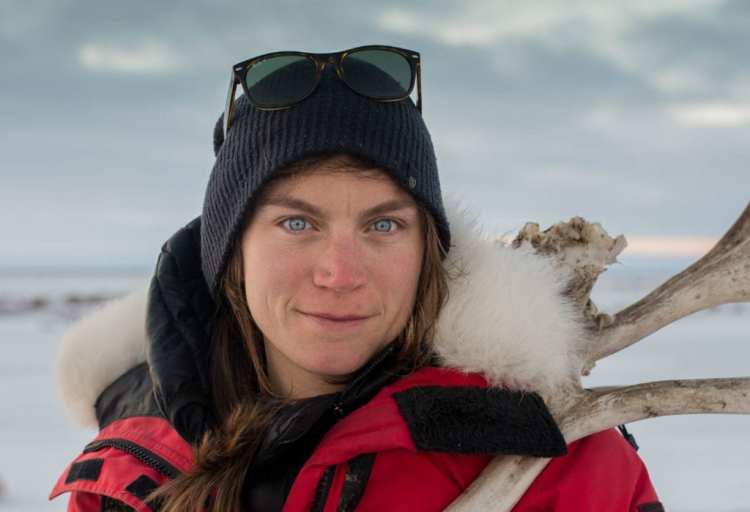
Françoise describes her attraction to the Arctic and why she’s drawn back each year. It’s a love of the land.
“The true wilderness of it. Where the landscape hasn’t been modified somehow by humans. This kind of landscape is still just so rare. A place where the landscape is vulnerable, nature is strong, and you are humbled.”
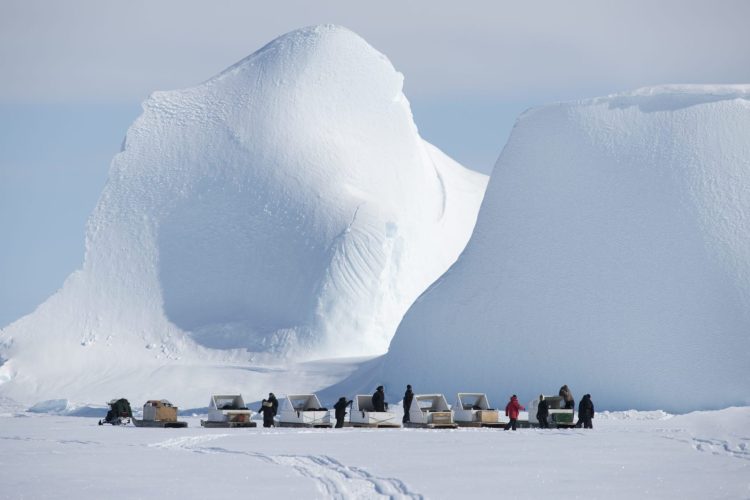
Françoise continues, “I was always learning what I needed to know for life in the field.” After a master’s degree in ecology and conservation she knew she wanted more. While on an expedition in Greenland she worked with Arctic Kingdom to charter a boat. After her expedition was over they needed someone to help and “so I stayed,” she explains. “And that’s what brought me to the Arctic.”
If you ask Dave Briggs, he describes his passion for the Arctic similarly: he’s drawn to the uniqueness of the Arctic. “It is a place that so few people have the opportunity to visit and photograph. It is home to fascinating people, Inuit.”
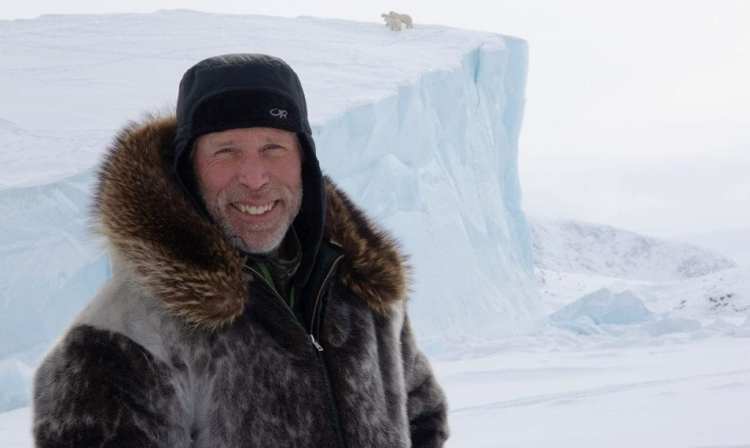
Dave has been guiding for 25 years around the globe. His adventures in guiding may have taken him to Indonesia, Africa and Central America but it’s the Arctic that has drawn him back for the last seven years.
“I feel guiding in the Arctic is the last frontier,” he says. “I love the remoteness and challenges in the Arctic. Arctic landscape can provide such large open spaces that they make the most incredible landscape photos.”
As an expedition leader and photographer he’ll tell you, “I enjoy wildlife photography because of my love of animals and being in their presence. But landscapes have always been a favourite because I find my eye is drawn to really capturing its essence.”
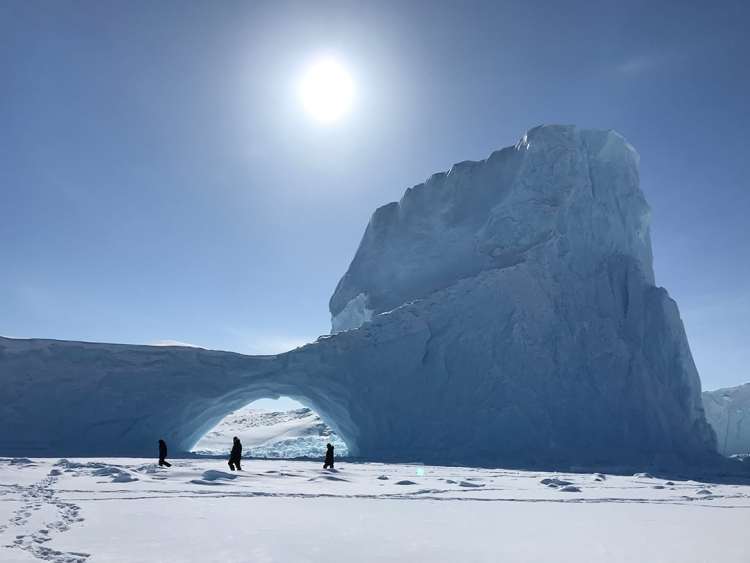
This seems to be a reoccurring theme for these two. A love of what the Arctic offers, not something to be owned but to be expressed. The Arctic is so unique and holds a surprising burst of life.
“I love taking photos of wildlife, and wildlife behaviour,” says Françiose. “They have such cool tricks that make them able to live in this harsh environment. So when you can catch that, it’s incredible.”
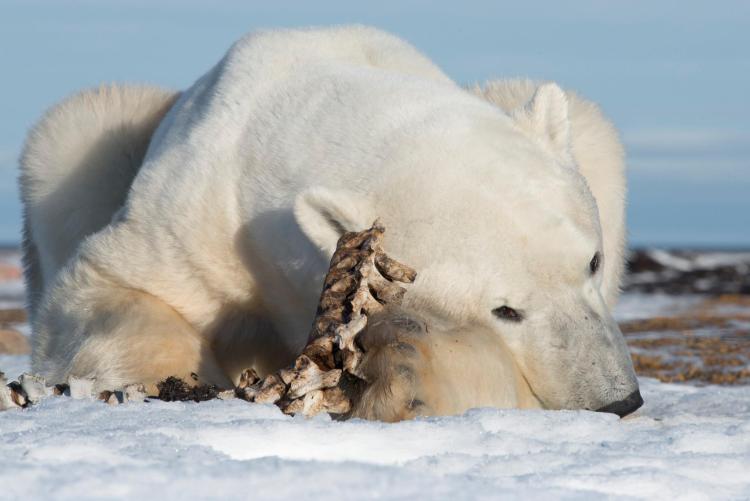
Are there any tricks to photography in the Arctic?
Françoise explains the tricks that she’s learned for an incredible wildlife photo. “There’s getting a picture of a polar bear, which is exciting! But when you know the animal well enough to know how to anticipate the moment that it does something interesting or cool, that’s when you take your picture.”
In fact, while Dave was lying down trying to get a photo of the frozen sea ice he chanced upon an encounter with an Arctic fox which is so rare he describes it as nothing short of “magical!”
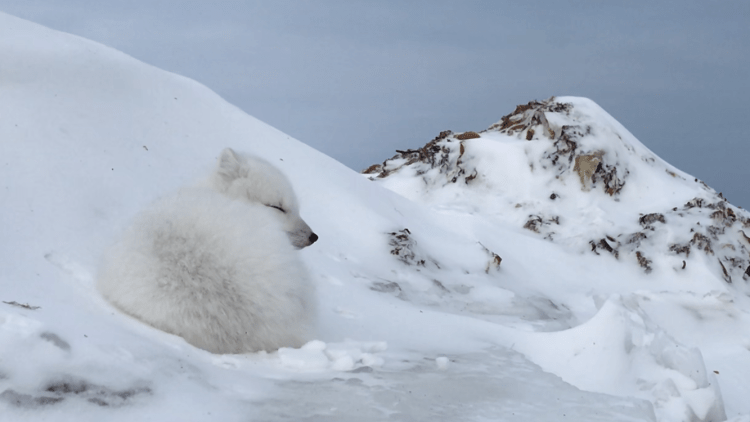
It is this knowledge and patience that makes for a remarkable moment to capture. He describes how, “as I continued to take pictures he would simply raise his head just to keep tabs on me before digging his noise back into the warmth of his beautiful white fur. The most awesome part of the entire encounter was when he casually returned to his nap after seeing what I was all about. That’s what I love.”
Check out the video of this encounter:
Learn more about this encounter here.
The Phenomenon of Arctic Scale
Polar bear and Arctic fox aren’t the only things inspiring about Arctic photography. These are people impassioned by their environment.
When your office is the beautifully expansive Arctic, it is hard to deny the inspiration to photograph it. Françoise describes photography in the Arctic as similar to Japanese art, where you only need the essentials. “I like the negative space a lot. You don’t need a lot of detail, where one line can make the whole photo.”
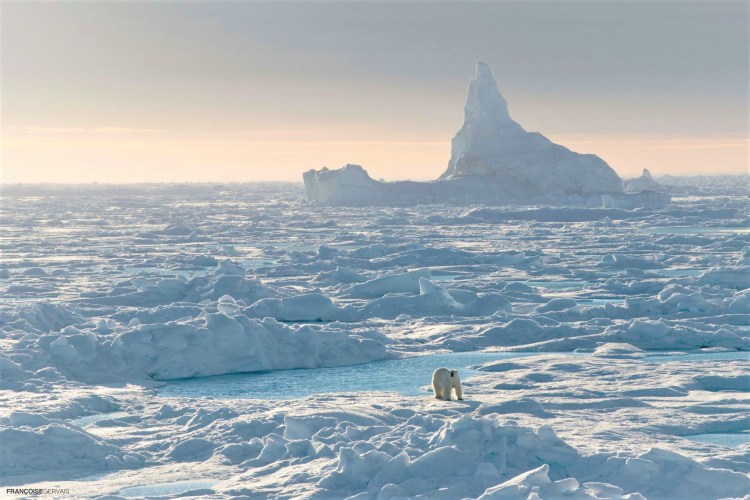
More than just a hobby
Dave and Françoise are not just amateur photographers. Both have had their photos picked up by magazines and websites.
Dave’s photos and videos have been featured in a number of magazines and online. This includes the Arctic fox video and another Arctic fox and Snowy Owl encounter that was picked up by National Geographic. Canadian Geographic Magazine also chose one of Dave’s photos for its 150 Ultimate Canadian Instagram Photos segment.
Françoise has been featured in magazines and one of her photos won a photo contest.
Humble and busy as they are, when I asked about awards both told me that they don’t have time to enter photos in contests. It seems that even without trying these two have become prolific photographers, when they can spare a minute.
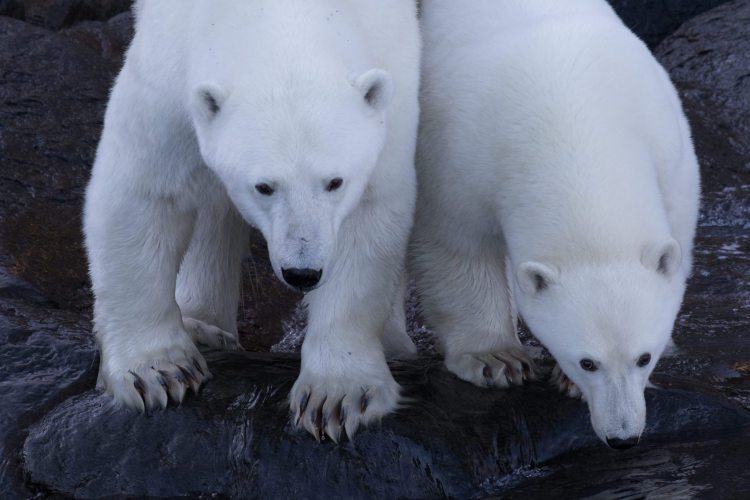
What is your favourite photo?
How do you decide a favourite when you have a whole collection from years in this natural wonderland?
Françoise describes two of her favourite photos. One where a polar bear is climbing rocks, and it was nighttime so its . “It was something I didn’t know about polar bears, that they were such good climbers. It’s an aspect that’s surprising. The vastness and the power and even a polar bear can look tiny in the lens cap. How it’s the biggest predator but it looks fragile.”
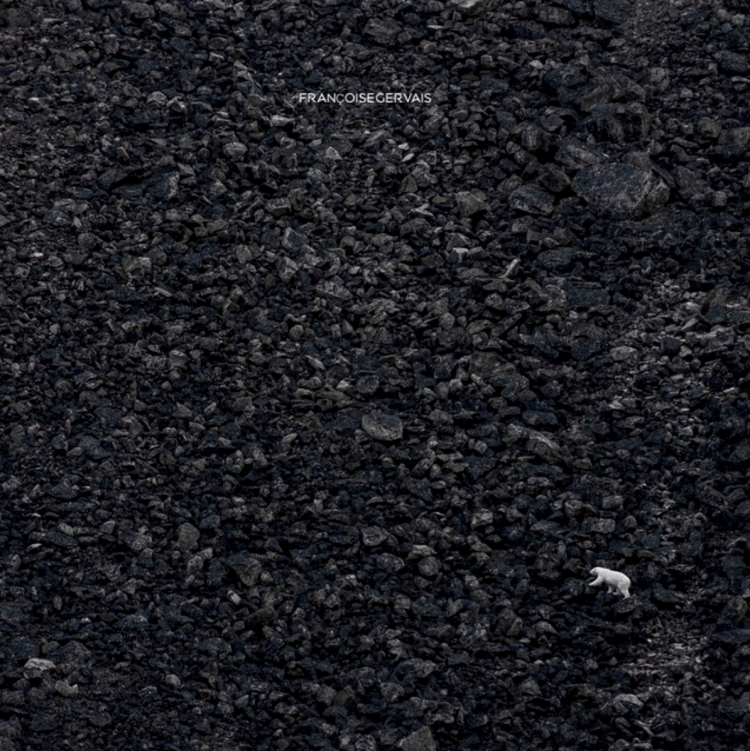
She describes another photo that captures this contrast between powerful and fragility. It’s a photo of a polar bear in a blizzard and it’s trying to hide its face.
“Even this really strong animal is fragile in a blizzard and in that harshness. It was capturing this in a photo that I really liked,” she says.
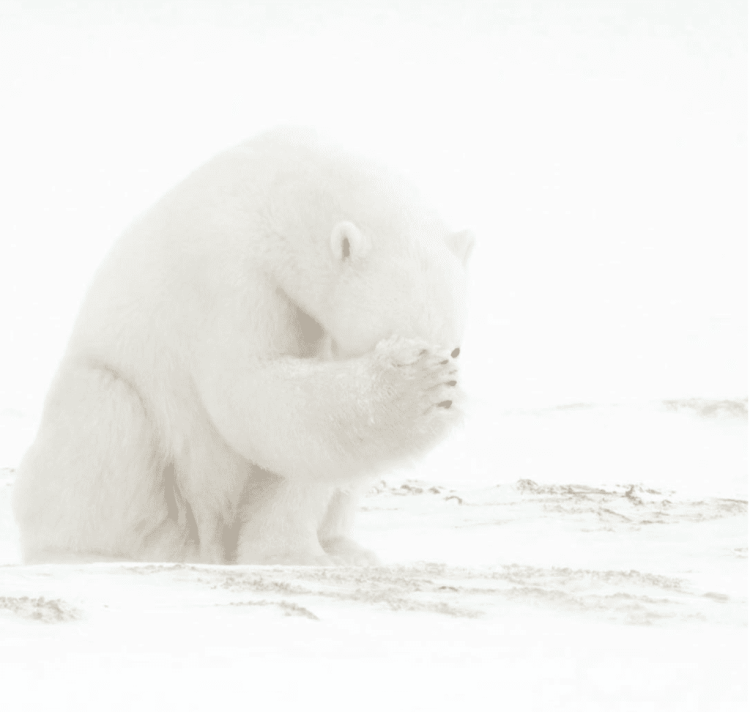
Dave, in contrast, can’t pick a favourite so easily.
“I cannot commit to a single favourite photo,” Dave says. “But a couple come to mind as being pretty special.” The first photo he points to is one he calls, “Abby Road.” It’s a remarkable photo of a mother polar bear and her three grown cubs.
He explains how polar bear mothers rarely have more than two cubs and most cubs are run off by the time they reach this age. “It’s just such a rare occurrence to capture.”
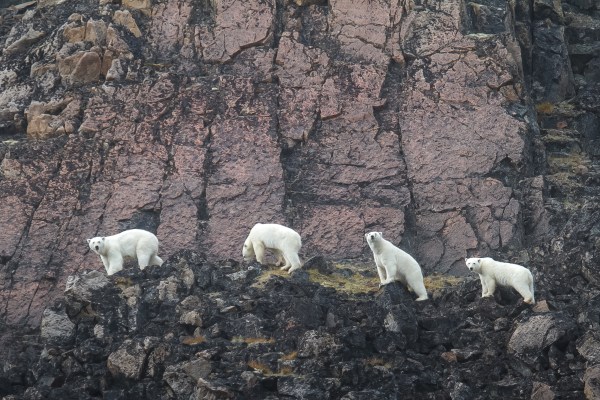
The other photo he describes is of a polar bear walking in front of a full moon.
“What makes both these photos a favourite is not the technical merit of the photos,” he says. “But how unique and incredibly lucky I was to be in the right place at the right time.
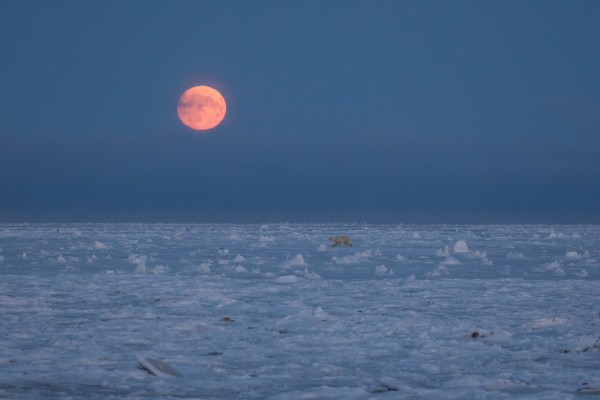
Do you have a favourite camera or a preferred lens length?
When asked if he had a favourite camera or suggestion for guests when they come North, Dave begins to get excited talking about his technical toys. He prefers a Canon EOS-7D MK II. And when he’s taking photos of wildlife his preferred lens is a Canon EF 100-400MM F4.505.6L IS II USM. When it’s for landscapes he likes a Canon EF-S 15-85MM 3.5-5.6 IS USM LENS.
For anyone coming to the Arctic he suggests at least a 400mm lens but explains, “remember there are a lot of variables…one of my best walrus pictures was taken with my iPhone.”
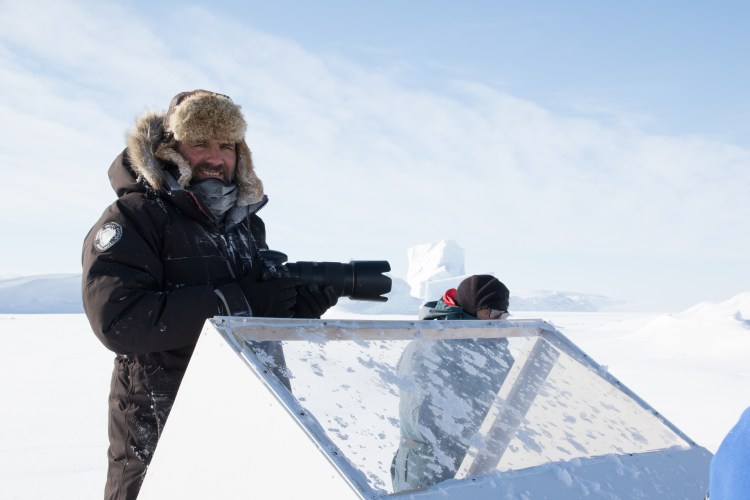
Françoise expresses similar sentiment. She mentions that she uses a Nikon but continues to say, “whatever camera you have is always the best. It can be just an iPhone, just as long as you have one. It always depends on what inspires you.”
When it comes to lens she prefers a 300 mm lens over a 500 mm. “I never use anything over 300 mm because I like to capture animals in their natural habitat,” she explains. “Plus remember, I’m guiding so I can’t carry all that stuff. I like to be mobile, being able to get on your belly at the level with the wildlife.”
Do you have any advice for anyone photographing the Arctic?
Françoise suggests understanding the power of negative space. “If the bear is on the left and you can express all the space on the right side, that’s how you capture the feeling of Baffin Island.”
For anyone trying to get the perfect photo she encourages you to have “the patience of a hunter. There is a habit of moving places if you’re not having luck or haven’t seen anything lately,” but she explains that the grass isn’t always greener somewhere else when it comes to animals. “The trick,” she says, “is trusting your guides knowledge and just letting go to enjoy all the other things around you.”
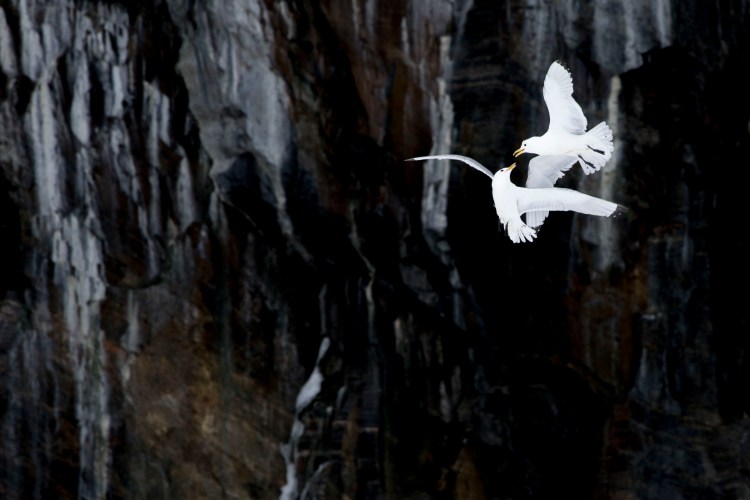
This is reinforced with Dave explaining, “You have to be incredibly patient. Animals have their own agenda and it rarely falls in line with ours!” This is what he’s learned from all his experience with adventure and with photography. He subscribes to the belief that, “a successful wildlife photographer will do their homework and learn as much about the animal or the subject they hope to photograph.”
What can you take away from these Arctic veterans?
That the trick to photography in the Arctic is trying to capture the essence of the Arctic. One last piece of advice from Françoise and Dave: Learn to sometimes put down the camera and just take a picture with your eyes. Enjoy the moment.
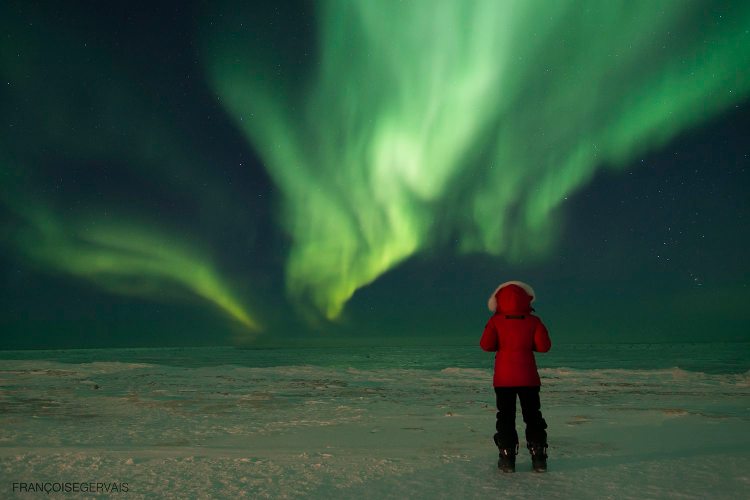
Want to see more of Dave and Françoise’s photography?
Explore photos by our Expedition Leaders and guests on Instagram @arctickingdomexpeditions.
Are you a passionate photographer interested in capturing the beauty of the Arctic landscape or iconic wildlife of the North? Get more tips for photography in the Arctic here.
Check out our Arctic Safaris to find out what natural phenomena, landscapes or wildlife you can get the chance to photograph in the Arctic. Contact us today for more information.
By: Mat Whitelaw



